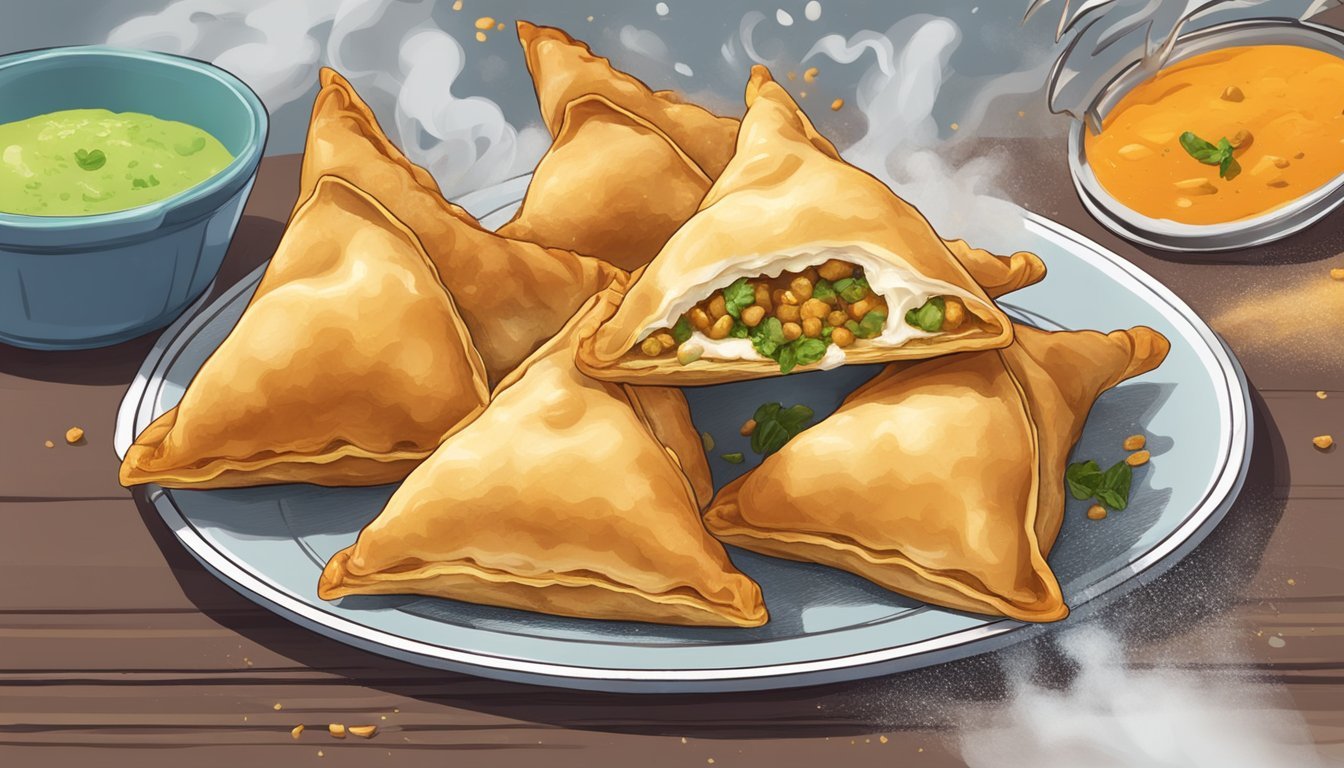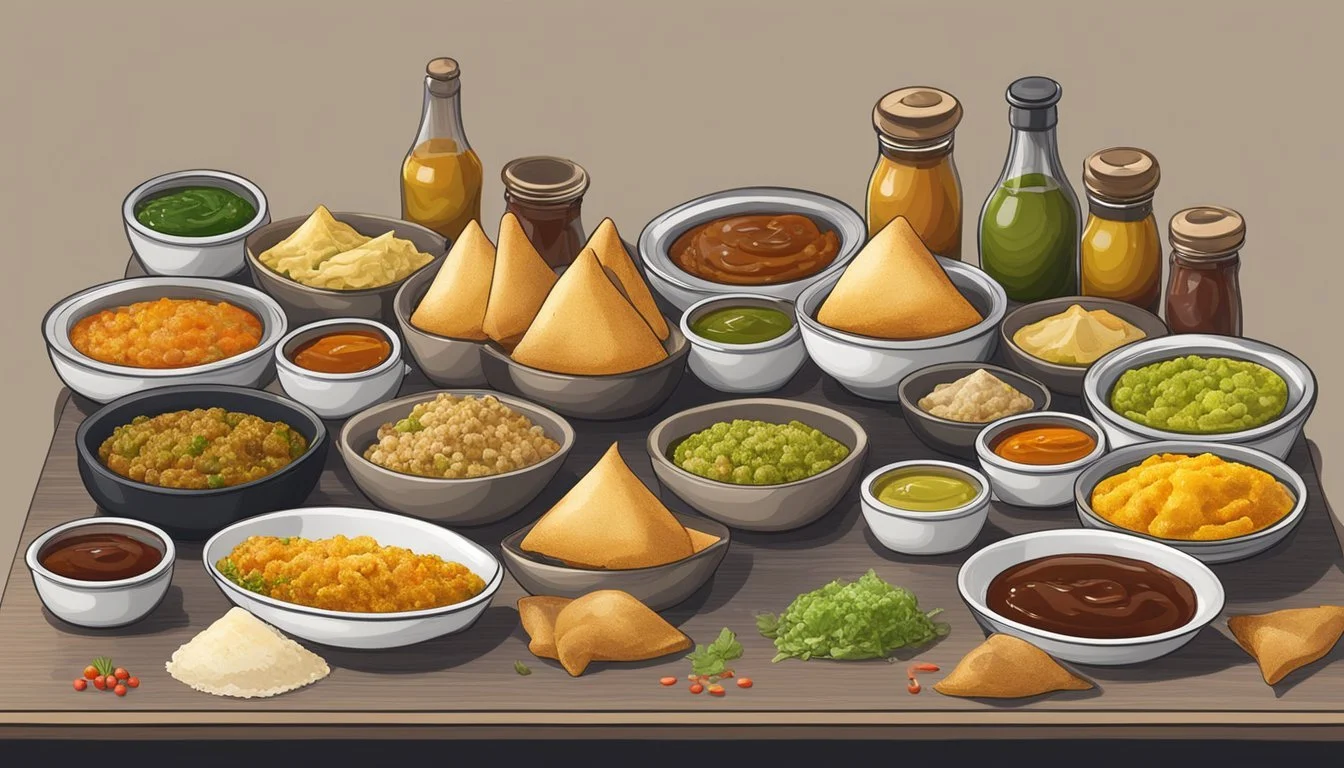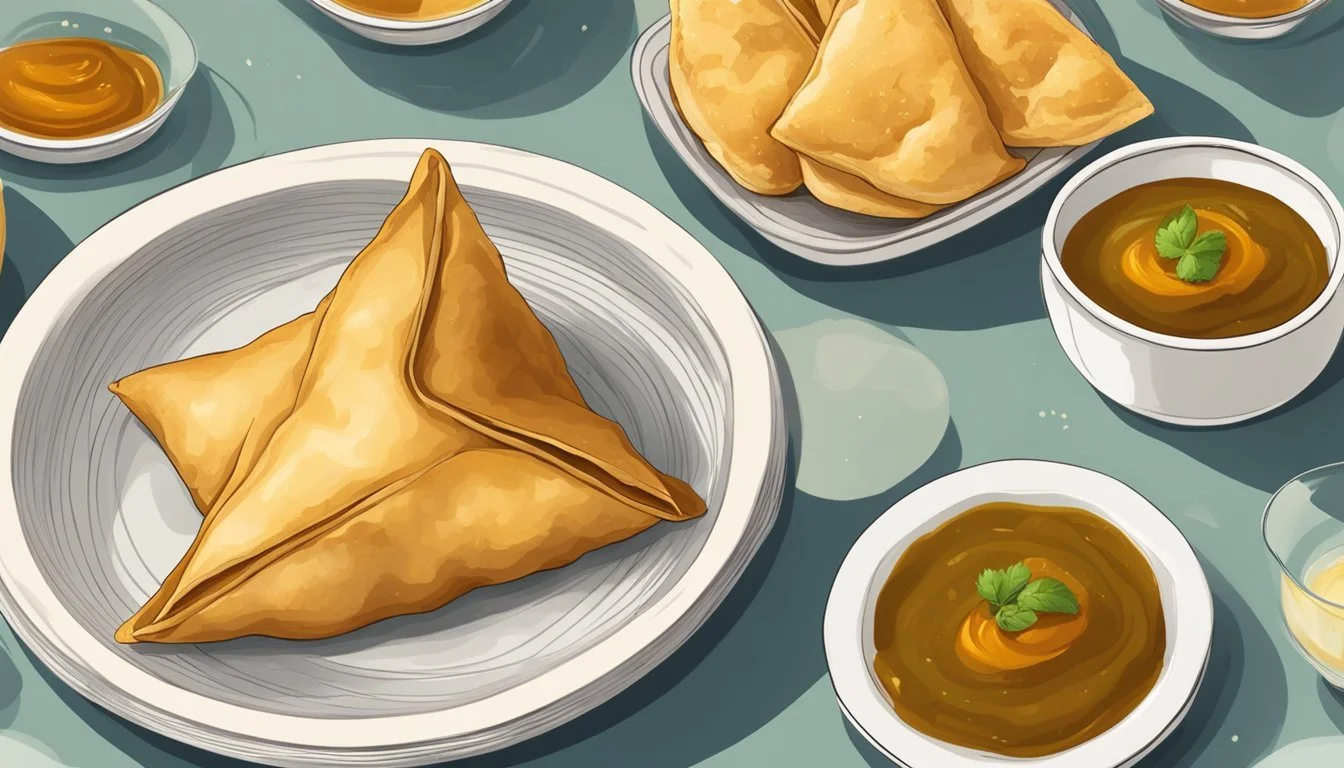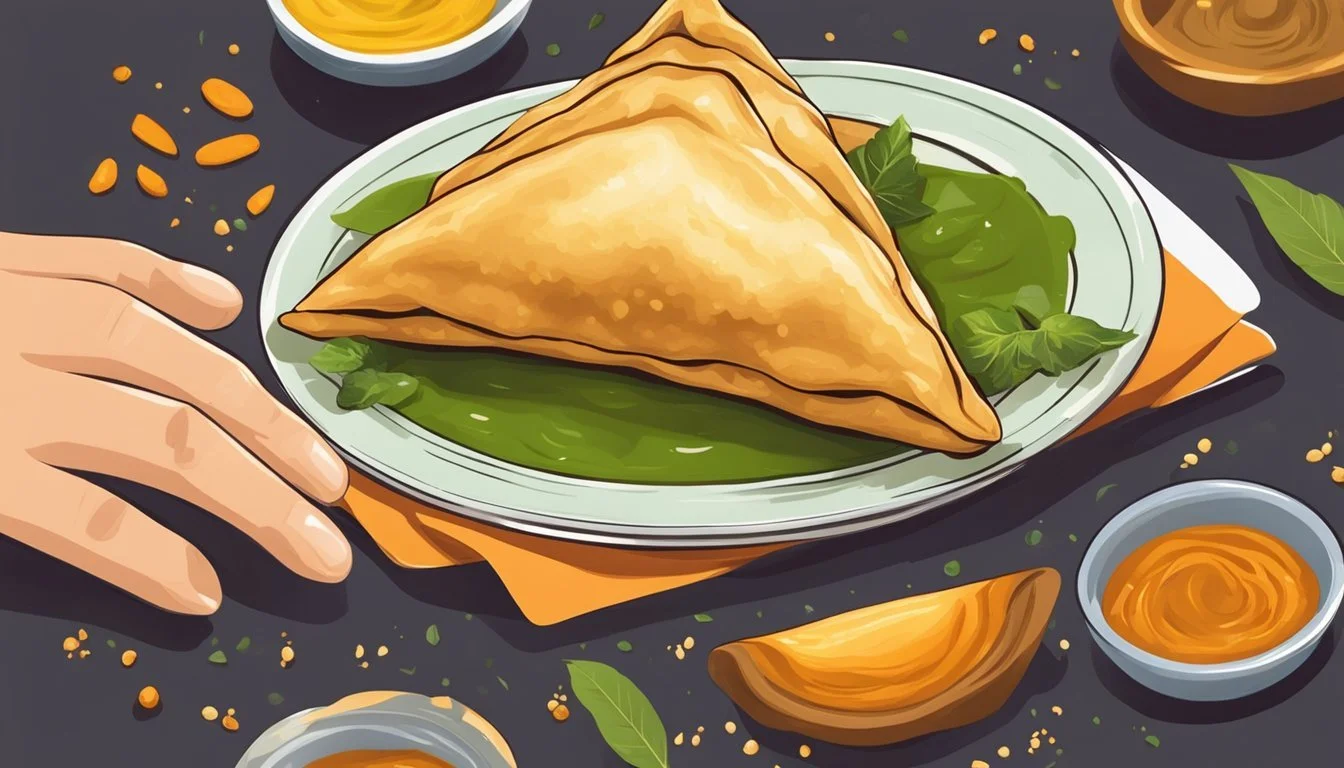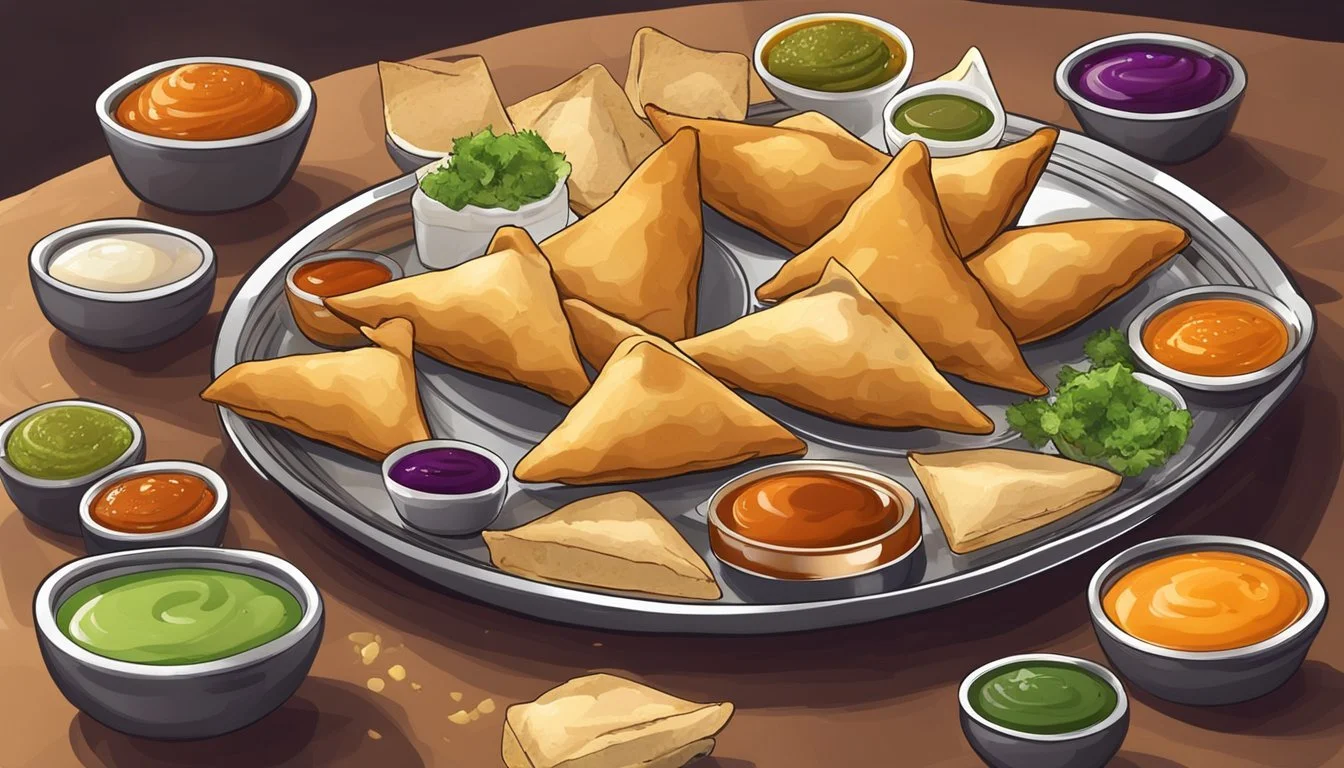How do you eat an Indian samosa?
Tips for Enjoying this Delicious Snack
Samosas are a quintessential element of Indian cuisine, revered not just as a snack but as an embodiment of cultural richness and diversity. This delectable appetizer is known for its crisp outer layer and a rich filling, which usually consists of a fragrant mixture of mashed potatoes, peas, and spices, although variations with meats and other fillings are also popular. Originating from the Indian subcontinent, the samosa has gained universal appeal, with each region in India offering its own unique twist on the recipe.
When consuming a samosa, the experience is as important as the taste. It is typically enjoyed by holding it with the fingertips, taking cautious bites to savor the blend of flavors and textures. A common practice is to eat it while it's still warm, allowing the external crunch to complement the soft, well-spiced interior. Dipping sauces such as chutney or yogurt are often served alongside to enhance the flavor profile.
The manner of eating a samosa can also be reflective of one's personal eating habits or regional customs. Whether it's eaten on the go as a street food delight or served on a plate as part of a larger meal, the versatility of samosas makes them a cherished component of India's culinary tradition. They serve as a flavorful introduction for those unfamiliar with Indian appetizers and remain a staple for those who have long admired the intricacies of the region's flavors.
History and Origin of Samosas
The samosa has a storied history, emerging in the Middle East before becoming a staple in South Asia. Its journey reflects cultural exchanges and the evolution of cuisine across regions.
Influence on Indian Culture
Samosas have profoundly impacted Indian culture, transcending their Middle Eastern origins to become an iconic street food and an integral part of Indian cuisine. They have not only been embraced as a popular snack across the subcontinent but also symbolize the confluence of various cultures throughout history. In India, samosas often represent hospitality and are a common feature at social gatherings, celebrations, and tea time.
Variations Across Regions
While the iconic triangular shape of the samosa is prevalent, regional variations abound:
North India: Filled predominantly with spiced potatoes, peas, and sometimes meat.
South India: Smaller in size, often featuring local flavors such as coconut and fish.
West India: Sweet versions like the 'Mawa Samosa' contain dried fruit and nuts.
Additionally, samosas differ in preparation, with baking emerging as an alternative to the traditional frying method, catering to health-conscious consumers. Whether served with sweet tamarind chutney or spicy green chutney, the samosa's variations demonstrate its adaptability to regional tastes and preferences.
Preparing the Samosa Dough
The foundation of any good samosa is its dough, which promises a crispy and satisfying crunch. The quality of dough depends on the type of flour used, achieving the right consistency and texture, and employing proper kneading techniques.
Choosing the Right Flour
The choice of flour is crucial in samosa dough preparation. All-purpose flour is the most commonly used type due to its ideal gluten content, which offers elasticity and strength to the dough. However, for a healthier alternative, some opt for whole wheat flour, though this may result in a denser dough. It's important for the chef to decide the desired texture before selecting the flour.
Consistency and Texture
A precise balance of flour, salt, and water is key to the perfect dough consistency. A general ratio to consider is:
2 cups of flour
1/4 teaspoon of salt
3-4 tablespoons of oil or ghee
About 1/2 cup of water
The dough should neither be too sticky nor too crumbly. It's essential to add the water gradually while mixing to ensure a smooth, firm dough that holds together without splitting.
Kneading Techniques
Kneading the dough is a step that shouldn't be rushed. Proper kneading develops the gluten in the flour, contributing to the dough's elasticity. The technique involves pressing the dough with the heels of the hands, folding it over, and turning it, which should be repeated for about 5-7 minutes until the dough is smooth and pliable. The kneaded dough should then be covered with a damp cloth and left to rest, which makes it easier to handle and shape into samosas.
Samosa Filling Varieties
Samosas offer a rich palette of flavors and textures, featuring fillings from traditional spice-laden potatoes and peas to robust meat alternatives or inventive modern creations.
Traditional Potato and Peas Filling
The classic samosa filling combines potatoes and peas, woven together with a medley of spices such as cumin, turmeric, and garam masala. This staple filling is not only flavorful but also packs fiber, making it a satisfying vegetarian option. Tamarind chutney complements this filling, adding a tangy sweetness that contrasts the spices.
Meat Fillings and Alternatives
For those who prefer a protein-rich samosa, chicken or lamb fillings are popular. These meats are often marinated in spices like garam masala and coriander seeds to ensure each bite is tender and bursting with flavor. Alternatives to traditional meats include tofu or paneer for a vegetarian protein fix.
Innovative and Modern Twists
Chefs and home cooks alike are getting creative with samosa fillings, incorporating ingredients that push the boundaries beyond classic recipes. Imagine a samosa with a filling of Jalapeño and Three Cheese, bringing a spicy kick and a melt-in-your-mouth experience. These innovative fillings often fuse different cuisines and flavors, offering a modern take on the timeless samosa.
Assembling the Samosa
The assembly of a samosa is a delicate process that lays the foundation for its final taste and texture, necessitating careful attention to shaping and ensuring the desired crispiness of the crust.
Shaping and Sealing Techniques
Proper shaping of samosas starts with dividing the dough into even portions. This dough must be rolled out into thin, even circles about 8 inches in diameter. It's pivotal that the circles are not too thick, as this will affect the cooking time and potentially lead to a less crispy crust. Once rolled out, each circle is sliced in half to form two semi-circles.
The semi-circle must be shaped into a cone by bringing the straight edge's corners together, forming a seal along the edge with a dab of water. This technique requires precision to prevent the filling from leaking during frying. The cone is then stuffed with the savory filling, typically a mixture of spiced potatoes, peas, and other ingredients. To seal the samosa, one must press and fold the open edges together, ensuring the seal is tight and that no filling can escape.
Ensuring a Crispy Crust
Achieving the perfect crispy crust for a samosa involves a combination of the correct dough composition and frying technique. Samosa dough should be stiff yet pliable, not like puff pastry, which is more suitable for flakier pastries. Instead, samosa dough, when fried, should offer a satisfying crunch but also hold its shape well.
To ensure a crispy crust:
Dough Thickness: Roll the dough to a consistent, thin layer for even cooking.
Oil Temperature: Fry the samosas in oil that is moderately hot; if the oil is too cool, the samosa will absorb the oil and become soggy, while oil that's too hot can burn the crust.
Frying Time: Cook the samosas until they turn a golden-brown color, which indicates a well-formed crust.
Resting: Allow the samosas to rest on a paper towel after frying to absorb any excess oil.
Attention to each step of shaping and frying is critical to create a samosa that is not only visually appealing but also has the hallmark crispy crust that makes this Indian snack so beloved.
Cooking Methods for Perfect Samosas
Crafting the perfect samosa involves choosing a cooking method that suits one’s taste and health preferences while ensuring the samosa's signature texture is achieved—crispy on the outside, yet soft and savory on the inside.
Deep Frying for Crispiness
The traditional method to cook samosas is by deep frying them in oil. Here, vegetable oil or canola oil is heated to a high temperature in a deep pan or kadhai. Samosas are added to the hot oil, which should be maintained between 350°F (175°C) to 375°F (190°C), and fried until they turn golden brown. It is crucial to fry samosas on medium to low heat to ensure even cooking without burning the crust.
Temperature: Maintain 350°F - 375°F.
Oil Type: Preferably vegetable or canola oil.
Cooking Time: Fry until golden brown, ensuring the heat is not too high to avoid burning.
Baking as a Healthier Option
For those seeking a healthier alternative to deep frying, baking samosas in an oven is an excellent choice. Preheat the oven to 375°F (190°C), and place the samosas on a baking sheet lined with parchment paper to prevent sticking. Lightly brush the samosas with oil to help achieve a crispy texture. Bake for about 15-20 minutes or until they are golden brown and crisp.
Temperature: Preheat the oven to 375°F.
Baking Time: Approximately 15-20 minutes.
Healthy Tip: Lightly brush with oil for crispiness.
Tips for Even Cooking
Whether one opts for deep frying or baking, ensuring even cooking is paramount for the perfect samosa.
Do not overcrowd the samosas while frying or baking to allow consistent heat distribution.
Turn the samosas gently halfway through the cooking process to allow both sides to become evenly crispy and golden brown.
In deep frying, control the heat carefully. If the oil is too hot, the outer crust will cook too quickly while leaving the inside undercooked. Conversely, if the oil is not hot enough, the samosas may turn out greasy and soggy.
Serving and Presentation
When serving an Indian samosa, presentation varies from simple to sophisticated, catering to both casual snacking and formal gatherings. The key components include an array of chutneys and sauces, a visually appealing plating technique, and mindful beverage pairing to enhance the overall dining experience.
Accompaniments and Sauces
Samosas are often accompanied by various chutneys and sauces that complement their flavors. Classic chutneys include:
Mint Chutney: A refreshing blend of mint leaves, green chilies, lemon juice, and yogurt.
Tamarind Chutney: A sweet and tangy sauce made from tamarind pulp, sugar, and mixed spices.
These condiments not only add a burst of flavor but also provide a colorful contrast on the plate.
Plating and Decoration
For an eye-catching presentation, samosas should be plated with attention to detail:
Lemon Juice: A drizzle or a small wedge of lemon can add a zesty flourish.
Chaat: A sprinkle of chaat masala over the samosas brings spice and tanginess.
Hot Samosa: Ensure the samosas are served hot and arranged neatly with the pointed ends facing upwards.
Decoration may vary based on the occasion, from a simple arrangement on a plate to more elaborate setups for a party.
Pairing with Beverages
The choice of beverages to pair with Indian samosas is crucial:
Tea: A hot cup of chai tea is the traditional go-to; its warmth pairs well with the spices.
Yogurt-Based Drinks: For a cooling contrast, a yogurt-based beverage such as a lassi can be served.
Selecting the right drink can round off the samosa-eating experience, offering balance to the palate.
Storing and Reusing Leftover Samosas
When it comes to leftover samosas, maintaining their crispiness is paramount. Proper storage methods, and careful reheating techniques ensure these snacks retain their delectable texture and robust flavor for future enjoyment.
Refrigeration and Freezing
Refrigeration: Leftover samosas should be stored in airtight containers or tightly sealed in plastic wrap to retain freshness when refrigerated. They can be kept in the refrigerator for 2-3 days.
Airtight Container: Place samosas in a single layer.
Plastic Wrap: Wrap each samosa individually.
Freezing: For longer storage, samosas can be frozen for up to three months.
Let leftover samosas cool to room temperature.
Wrap each samosa in aluminum foil or plastic wrap.
Place the wrapped samosas in freezer bags, squeezing out excess air before sealing.
Reheating Without Losing Texture
Oven Method: To preserve the crispiness, reheating in the oven is recommended.
Preheat oven to 350°F (175°C).
Place samosas on a baking sheet lined with parchment paper.
Heat for 10-15 minutes, checking halfway to ensure even reheating.
Air Fryer Method: For a quicker option that also keeps samosas crispy:
Preheat air fryer to 350°F (180°C).
Place samosas in the air fryer basket without overcrowding.
Heat for 3-5 minutes, shaking the basket halfway through.
Skillet Method: If an oven or air fryer is not available, a skillet can be used.
Heat a non-stick skillet over medium.
Add a small amount of oil to coat the bottom.
Place samosas in skillet for 2-3 minutes each side.
Each reheating method has the same goal: to maintain the samosa's crispy exterior and ensure it is heated through to enjoy a restful meal with close to the original taste and texture.
Dietary Considerations and Nutrition
When considering how to include Indian samosas in a diet, awareness of their nutritional content is essential. They can be modified to suit various dietary needs.
Calorie Count and Macros
A typical serving of four vegetable samosas contains approximately 230 calories, with macros generally consisting of 11 grams of fat, 4 grams of protein, 29 grams of carbohydrates, 2 grams of fiber, and 3 grams of sugar. The filling and size of the samosa can cause these numbers to vary.
Gluten-Free and Low-Carb Options
For those requiring a gluten-free or low-carb diet, traditional samosa wrappers made from maida (all-purpose flour) are not suitable. Alternatives include:
Whole-grain flours such as atta
Gluten-free blends for the dough
Cauliflower rice as a low-carb filling
These substitutions can enhance the nutritional profile by increasing the fiber content and decreasing the net carbohydrates.
Incorporating into a Balanced Diet
Samosas can be included in a balanced diet with consideration to:
Vegetable oil: Choose healthier oils like olive oil if opting for samosas that are baked or fried.
Portion Control: Eating samosas in moderation is key to maintaining a balanced diet.
Protein: Include a protein-rich side to complement the samosa and achieve a more nutritious meal.
By selecting the right ingredients and serving sizes, samosas can be enjoyed as part of a diverse and balanced diet.
Common Mistakes and Troubleshooting
Eating an Indian samosa is a delightful experience when done right. However, common issues can detract from this experience, such as samosas becoming soggy, fillings leaking out, or the dough having imperfections. This section will guide one through overcoming these pitfalls.
Avoiding Soggy Samosas
Frying Temperature: A common mistake is frying samosas at incorrect temperatures. Ensuring the oil is at a medium-high temperature (around 350°F) before frying will prevent them from absorbing excess oil and becoming soggy.
Do Not Overcrowd: When placing samosas in oil, avoid overcrowding the pan as this reduces the temperature, leading to uneven cooking and sogginess.
Preventing Filling from Leaking
Proper Sealing: To prevent fillings from leaking out, one must seal the edges of the samosa thoroughly. Using water or a flour paste along the edge before pressing it shut can help create a tight seal.
Filling Consistency: The moisture content in the filling should be monitored. Excess moisture can cause the filling to leak, so ensure the filling is dry enough before stuffing the samosas.
Fixing Dough Imperfections
Dough Consistency: The right dough consistency is crucial. The dough should be firm and smooth to prevent cracks. If it's too dry, adding a little water and kneading it can help.
Repair Tears Immediately: If the dough tears, one should immediately repair it by patching the tear with a small piece of dough and smoothing the edges to restore the seal.
DIY Samosa Recipe for Beginners
Making homemade samosas may seem daunting, but with this straightforward recipe, anyone can prepare these delectable treats. A samosa is a fried or baked pastry with a savory filling, often including spiced potatoes, onions, peas, and lentils.
Ingredients for Dough:
2 cups all-purpose flour
¼ cup vegetable oil or ghee
½ tsp salt
½ cup water (approx.)
Ingredients for Filling:
2 large potatoes, boiled and mashed
½ cup green peas, boiled
1 tbsp vegetable oil
1 tsp cumin seeds
1 tsp fennel (how long does fennel last?) seeds
1 tsp crushed coriander seeds
1 tsp grated ginger
1 finely chopped green chili
½ tsp garam masala
Salt to taste
Method:
Dough: Mix flour and salt in a bowl. Add oil or ghee and rub in until the mixture resembles coarse crumbs. Gradually add water and knead into a firm dough. Cover and let it rest for about 30 minutes.
Filling: Heat oil in a pan. Add cumin, fennel, and coriander seeds, and wait until they sizzle. Follow with ginger and green chili, stirring for a few seconds. Add in the mashed potatoes and green peas, along with garam masala and salt. Cook until all ingredients are well mixed.
Assemble and Fry: Divide the dough into small balls. Roll each into an oval shape and cut in half. Form each half into a cone, fill with the potato mixture, and seal the edges with a little water. Heat oil in a deep pan and fry the samosas until they are golden brown and crisp.
This simple recipe yields delightful homemade samosas that are perfect as a snack or appetizer. They serve as a testament to anyone's developing culinary skills with their flaky crust enveloping a warm, spiced filling.
Exploring Regional Samosa Delicacies
In the diverse landscape of Indian cuisine, samosas shine as a beloved staple across regions, each area adding its own twist to this classic snack. An Indian restaurant is never complete without its own regional version of samosa, reflecting local flavors and preferences.
Northern India is known for samosas with spiced potatoes, peas, and sometimes even paneer. The use of ajwain seeds in the dough is a common practice, imparting a distinctive aroma to the crust. Amchur, or dry mango powder, brings a tartness to the filling, complementing the spices like ginger and coriander seed.
Eastern India offers samosas with a filling of cauliflower, and sometimes includes peanuts for a crunchy texture. The spices may include a mix of asafoetida and mustard seeds, providing a unique and pungent flavor profile especially popular in this area.
Western India: In regions like Gujarat, sweet and spicy flavors coexist harmoniously, with ingredients such as green chilis and sugar creating a balanced taste.
Southern India: A spin-off called the "samsa" is found in places like Hyderabad, where the fillings can include meat and are often flavored with local curry leaves and red chili powder.
Each region's samosa can offer a distinct experience, showcasing the versatility and depth of Indian spices and ingredients. Whether served with tangy tamarind chutney, or fiery mint sauce, these delectable triangles are a testament to the rich tapestry of flavors that Indian cuisine has to offer.

